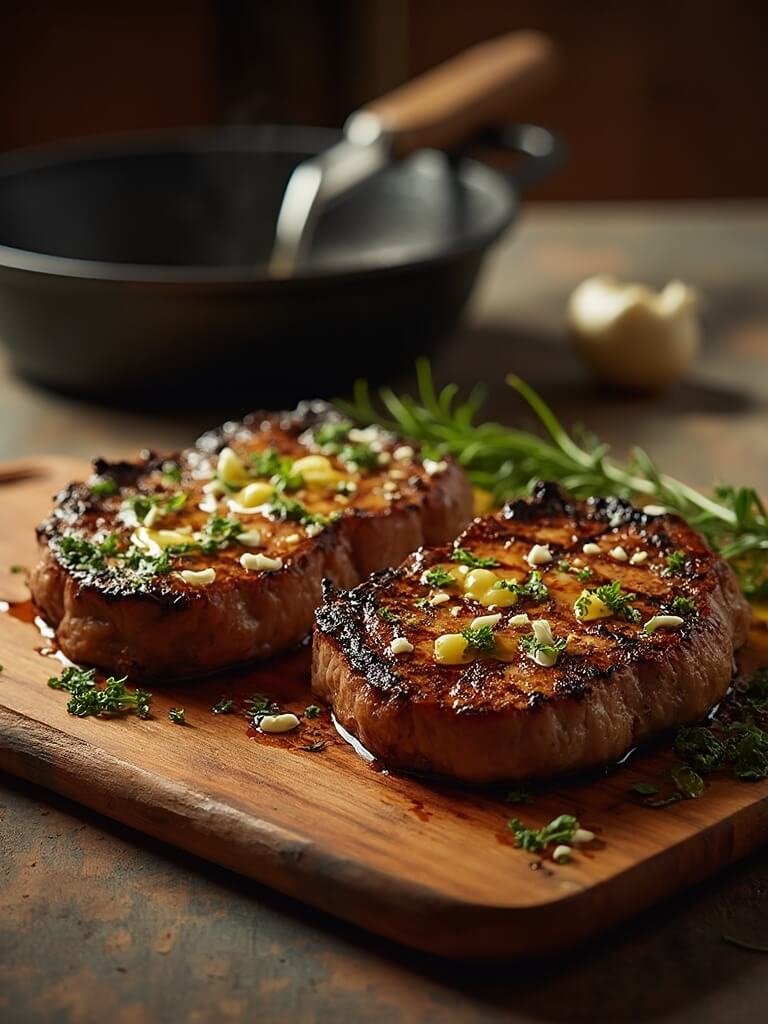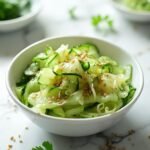Ever wondered why your ribeye steak never tastes as incredible as the one from your favorite steakhouse?
You’re not alone in this frustration.
- Ever wondered why your ribeye steak never tastes as incredible as the one from your favorite steakhouse?
- KEY INFO
- EQUIPMENT NEEDED
I’ve been there countless times – spending good money on premium ribeye steaks only to end up with something that’s either tough as leather or bland as cardboard.
The truth is, mastering the perfect seared ribeye steak with garlic butter isn’t about fancy equipment or secret ingredients.
It’s about understanding three critical elements: proper preparation, precise timing, and the magic of butter basting.
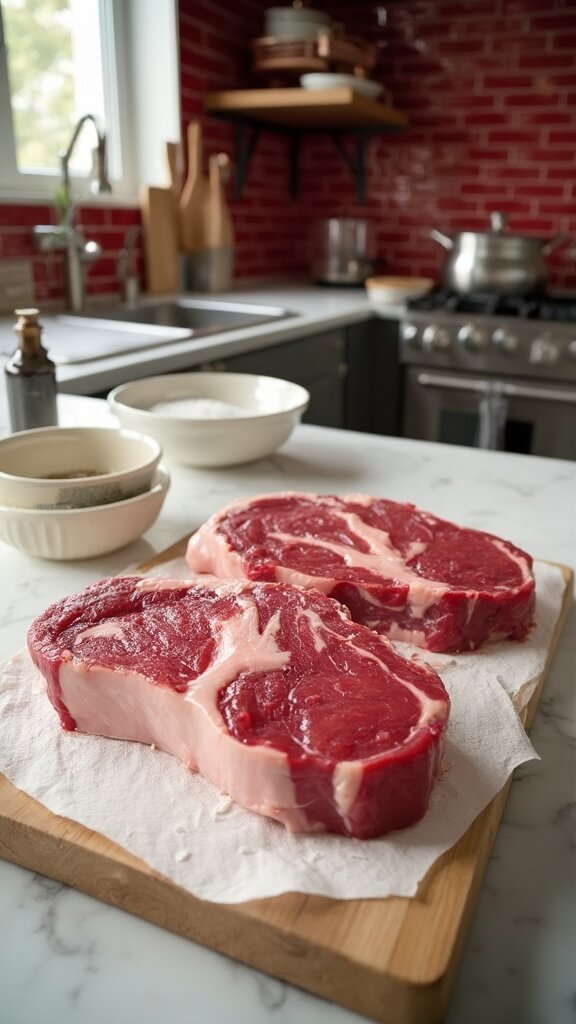
KEY INFO
Prep time: 10 minutes (plus 30-60 minutes resting)
Cook time: 10-12 minutes
Total time: 50-75 minutes
Servings: 2
Difficulty level: Moderate
Dietary tags: Gluten-free, Keto, Low-carb
EQUIPMENT NEEDED
Essential tools:
- Cast iron skillet (the absolute game-changer)
- Instant-read meat thermometer
- Tongs
- Small mixing bowl
Simple alternatives:
- Heavy-bottomed stainless steel pan (if no cast iron)
- Regular metal spatula (instead of tongs)
- Oven-safe skillet of any material
INGREDIENTS
For the steaks:
- 2 ribeye steaks, 1-1.5 inches thick (450g/1lb each)
- 1 tbsp high smoke point oil (15ml) – avocado or canola
- 2 tsp kosher salt (10g)
- 2 tsp freshly ground black pepper (4g)
For the garlic butter:
- 4 tbsp unsalted butter (60g) [salted butter works too]
- 3 garlic cloves, minced
- 2 tbsp fresh parsley, chopped (15g) [or 1 tbsp dried herbs]
- 1 sprig fresh rosemary [or 1 tsp dried rosemary]
METHOD
1. Remove steaks from fridge 45-60 minutes before cooking.
Let them come to room temperature completely. This prevents the dreaded cold-center, overcooked-outside disaster.
2. Pat steaks bone dry with paper towels.
I cannot stress this enough – moisture is the enemy of a good sear. Season generously with salt and pepper on all surfaces.
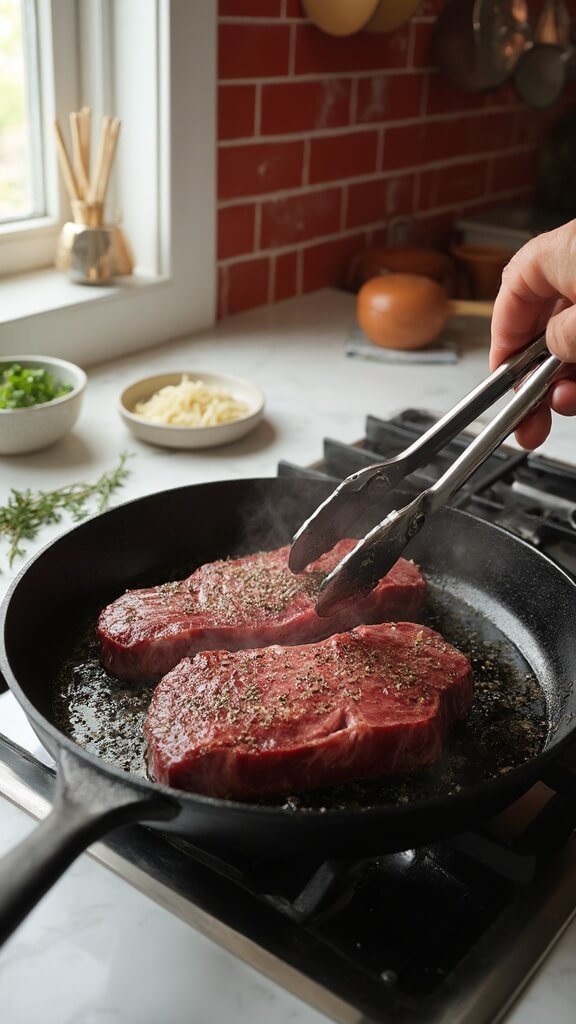
3. Heat your cast iron skillet over medium-high heat.
Add oil when the pan is hot. You’ll know it’s ready when the oil shimmers and almost starts smoking.
4. Gently place steaks in the pan. Don’t move them for 3-4 minutes.
Let that beautiful crust develop. You should hear a satisfying sizzle immediately.
5. Flip steaks once a golden-brown crust forms.
Sear the other side for another 3-4 minutes. For thick steaks, sear the edges by holding with tongs – about 30 seconds per edge.
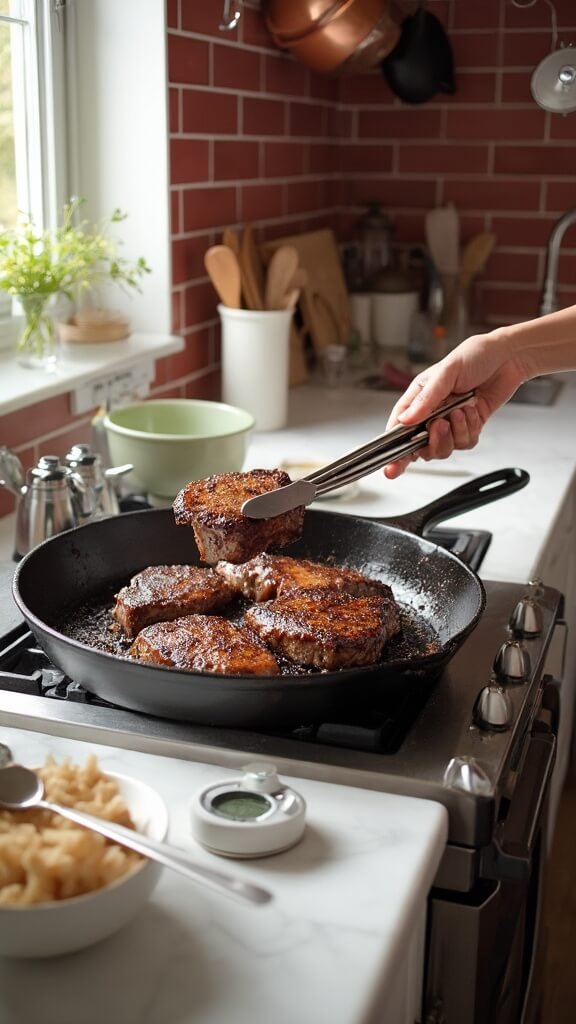
6. Reduce heat to medium.
Add butter, minced garlic, and herbs to the pan. Once butter starts foaming (not burning!), tilt the pan.
7. Baste continuously with the garlic butter.
Use a spoon to pour the melted butter over the steaks repeatedly. This step transforms good steak into extraordinary steak. Continue for 1-2 minutes.
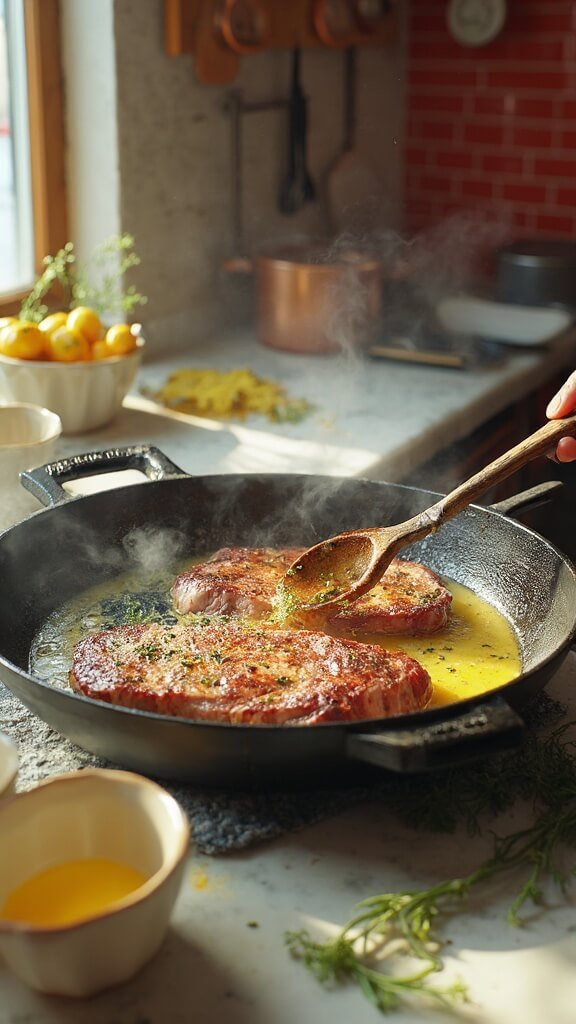
8. Check internal temperature:
– Rare: 120-125°F (49-52°C)
– Medium-rare: 130-135°F (54-57°C)
– Medium: 140-145°F (60-63°C)
9. For thicker steaks, finish in a 400°F (200°C) oven.
Transfer the entire skillet to the oven for 3-5 minutes. Check temperature every 2 minutes – it rises quickly.
10. Rest steaks for 5-10 minutes.
Transfer to a cutting board and tent loosely with foil. This redistributes the juices throughout the meat.
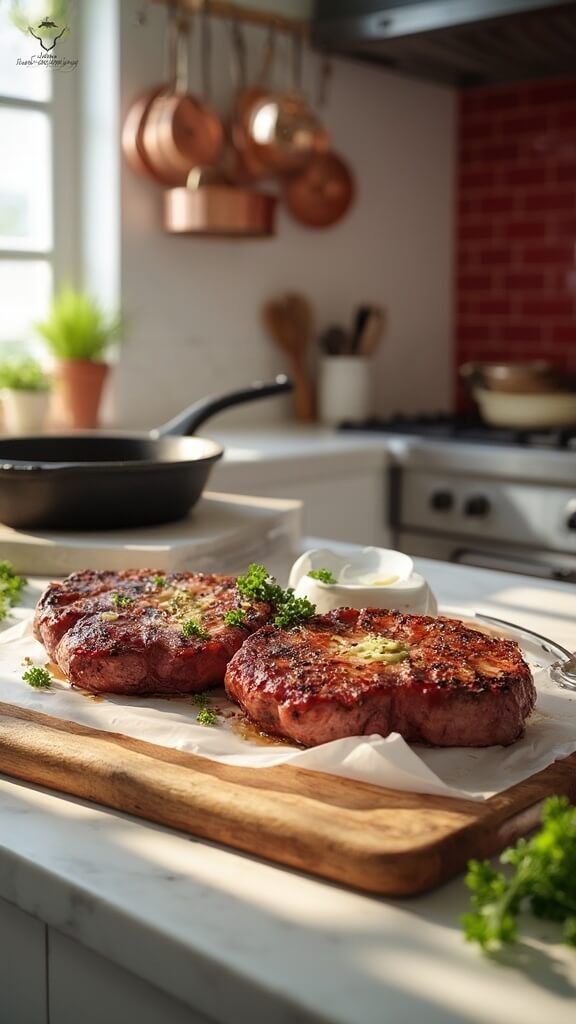
CRUCIAL TIPS
- Never press down on steaks while cooking – you’re literally squeezing out the juices
- Add garlic only after reducing heat – burnt garlic tastes bitter and ruins everything
- Use a thermometer – guessing doneness leads to disappointment
- Don’t overcrowd the pan – cook in batches if making more than 2 steaks
Storage & Scaling
Storage: Refrigerate leftovers up to 3 days in an airtight container with a pat of butter.
Reheating: Warm gently in a skillet over low heat with extra butter. Never microwave – it turns steak into rubber.
Scaling up: Cook in batches rather than cramming multiple steaks in one pan. Overcrowding drops the temperature and creates steam instead of sear.
Common Mistakes to Avoid
The biggest mistake I see? People flip their steaks constantly.
Stop it. Let that crust develop undisturbed.
Second biggest mistake? Not letting the steak rest.
I know it’s tempting to cut into that beautiful piece of meat immediately, but patience pays off with juicier results.
Third mistake? Using cold steaks straight from the fridge.
Cold steaks cook unevenly and often end up with that gray band of overcooked meat around the edges.
Variations That Actually Work
- Herb butter upgrade: Mix softened butter with fresh thyme, oregano, and a squeeze of lemon zest before adding to the pan.
- Spicy version: Add red pepper flakes to the garlic butter for heat.
- Dairy-free option: Substitute with ghee or high-quality plant-based butter.
- Grill adaptation: Follow the same timing on a hot grill, then finish with garlic butter off the heat.
The secret to restaurant-quality ribeye isn’t really a secret at all.
It’s about respecting the meat, understanding your pan, and having the patience to let each step work its magic.
I’ve made this recipe hundreds of times, and it never fails to impress – whether I’m cooking for myself on a Tuesday night or entertaining guests for a special occasion.
Master this technique, and you’ll never need to wonder why your steakhouse steak tastes better than yours.
Because now, it won’t.


